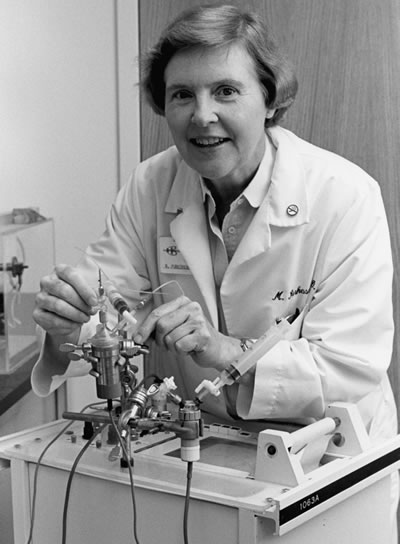
WashU Nephrology Faculty 1966-1998
The Division of Nephrology at Washington University School of Medicine has a long history of invigorating patient care and nephrology research breakthroughs. The Division was established in 1956, when the field of nephrology was in its infancy. At the time, there were no effective treatments available for chronic renal failure and dialysis for acute renal failure was considered to be experimental and limited to only a few specialty centers.

The first director of the division, Neal Bricker, MD, focused on the establishment of a core center for nephrology research and on the care of renal patients. Just two years after the division was established, it began offering hemodialysis services. The hemodialysis program now is one of the oldest and largest programs of its kind in the United States and continues to pioneer new technologies and patient care practices in all aspects of dialysis.
In 1960, Dr. Bricker published the “Intact Nephron Hypothesis” in the American Journal of Medicine, which noted that as the number of functioning nephrons decreases in patients with chronic kidney disease (CKD), each remaining nephron must perform a greater fraction of renal excretion. That opened the door for hundreds of investigations focused on the mechanisms behind CKD. As nephrology became a more established specialty across the country, Dr. Bricker was named the first president of the American Society of Nephrology when it was founded by 18 nephrologists in 1966.

The renal fellowship training program began at Washington University School of Medicine in 1961. Saulo Klahr, MD, a special scholar of the Colombian Institute for Specialization Abroad (awarded to the most distinguished graduate of Colombia School of Medicine), was the first renal fellow. Dr. Klahr joined the faculty upon the completion of his fellowship and subsequently succeeded Dr. Bricker as director of the division in 1972.

Together with Eduardo Slatopolsky, MD, who also completed his fellowship training at Washington University and joined the division faculty in 1965, Dr. Klahr successfully recruited a number of nephrology researchers and specialists that helped to establish the division as a major force for innovation in both patient care and nephrology research.

Rex Jamison, MD, was named the first director of the Division of Nephrology at The Jewish Hospital of St. Louis in 1967. At the time, Jewish Hospital had a separate training program from the one at Barnes Hospital but both were operated under the umbrella of Washington University School of Medicine. The two renal fellowship programs merged to become one training program in 1986.
The division has had a long and successful history of kidney and kidney/pancreas transplantation. Transplant specialists performed the first kidney transplant at Barnes Hospital in 1963. The next year, in 1964, the team performed the first pediatric kidney transplant at St. Louis Children’s Hospital. In a world’s first, nephrology specialists here also performed the first-ever islet of Langerhans transplant to achieve insulin independence in a recipient in 1990. Today, the Division of Nephrology transplant team specializes in a wide variety of transplant options, including deceased donor transplant, living donor and incompatible donor transplants, paired donor kidney exchange and combined kidney/pancreas transplants.
With its long-standing success with dialysis innovations, the division expanded the availability of its expertise and services by creating the BJC/Washington University Dialysis Network in 1997. The following year, the Washington University/Barnes-Jewish Hospital renal program was among the first such programs in the country listed in U.S. News & World Report’s “Top 10” rankings, a position it has held continuously ever since. Building upon its expertise, a Nocturnal Dialysis program was pioneered by the division in 2001. The Dialysis program continues to serve as a leading center for the development and evaluation of advanced dialysis technologies, including single needle dialysis and newer, more patient-friendly options for home dialysis.